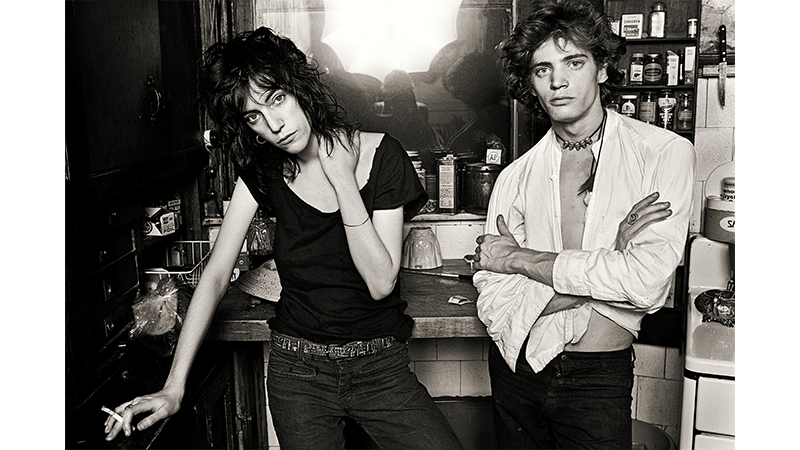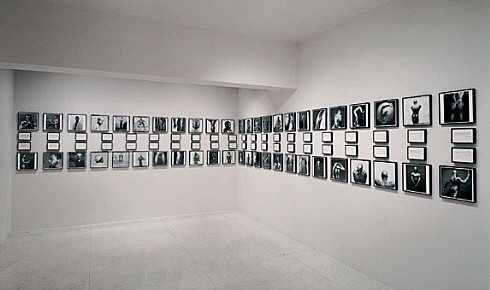Scorpio: The Astrology of Robert Mapplethorpe
Welcome back to Star Gays! We're rounding out Scorpio season by looking at the Astrology of Robert Mapplethorpe. Please consider becoming a patron of Star Gays to support the research and work that goes into teaching astrology and queer history. Patrons of Star Gays will now get access to special posts that dig deeper into the history and the astrology, and have the opportunity to attend live meetings breaking down each month's Star Gay!
Want to learn queer history and astrology? Become a patron of Star Gays! Together we'll uncover forgotten queer history, deepen our understanding of our queer ancestors, and become better astrologers by doing it. Patrons get access to exclusive content like bonus posts and live meetings!
For Scorpio season we're going to do a deep dive into the life and art of photographer Robert Mapplethorpe, known for his black and white portraits, still lifes of flowers, and erotic photography of gay leather and BDSM culture. Mapplethorpe’s often controversial portraits and his focus on eroticism put his art at the center of a series of culture wars and censorship fights that would extend beyond his life.

Biography
Robert Mapplethorpe was born in 1946 in Queens to a Roman Catholic family. He went to art school at Pratt Institute to study advertising but switched his focus to fine art, working on paintings, drawings and collages.
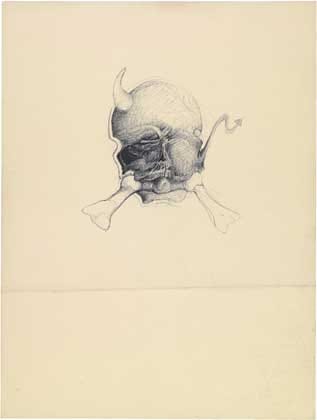
Mapplethorpe didn’t finish his arts degree but this didn't mean he wasn't making art. In 1967, at the age of 21, he met the artist Patti Smith. Smith and Mapplethorpe were romantic partners early on but remained creative collaborators for the rest of their lives. It was Patti Smith who encouraged him to try taking his own photographs after watching him cut up photos for his collages. He initially resisted. Film photography was both expensive and time consuming. But when another friend lent him a Polaroid camera, which offered a cheaper, more instantaneous solution, he quickly became obsessed.
In an essay in Robert Mapplethorpe: The Archive, Smith wrote,
“I had thought that Robert would simply take pictures to use as elements for his drawings and assemblages. But he became instantaneously consumed with photography and embarked wholeheartedly on this unanticipated course. Robert did nothing half measured. He combed secondhand stores in search of photography books and carefully studied them.”
This began his dive into photography, first through polaroid and then larger format prints.
By 1970, he had come to understand more about his sexuality and his artwork reflected this. In particular he was interested in gay men’s BDSM subculture in New York City. His photographs from the later 70s featured bondage, fetish wear, and explicit sex acts. Many of the men featured in these photos were friends and lovers of Mapplethrope, who he met at private gay night clubs like the Mine Shaft. In addition to having personal relationships with many of the men he photographed, Mapplethorpe also took photos of himself. His most (in)famous self-portrait included a bullwhip which was fashioned as an anal plug.
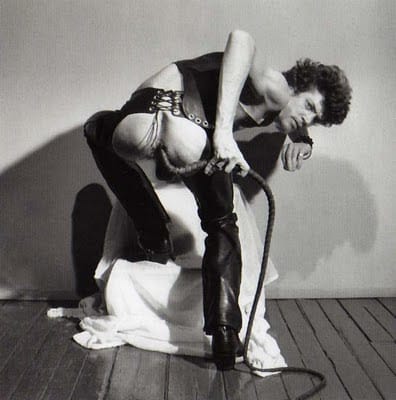
His ability to take these photos was in large part due to his relationship with curator and collector, Sam Wagstaff. They met in 1972. Wagstaff became Mapplethorpe’s lover and patron, gifting him a studio, an expensive camera, and connecting him with the New York social scene. Wagstaff helped legitimize Mapplethorpe’s more provocative photography to a cautious art world.

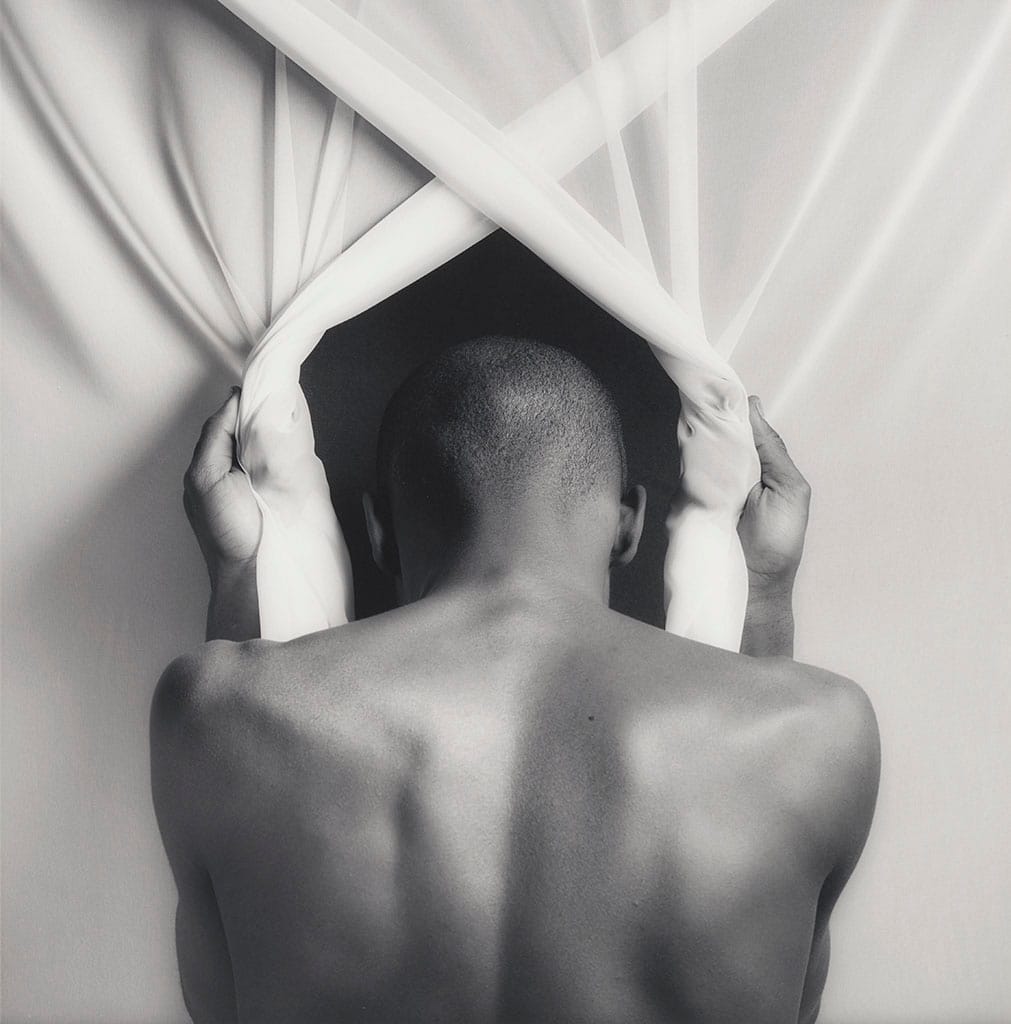

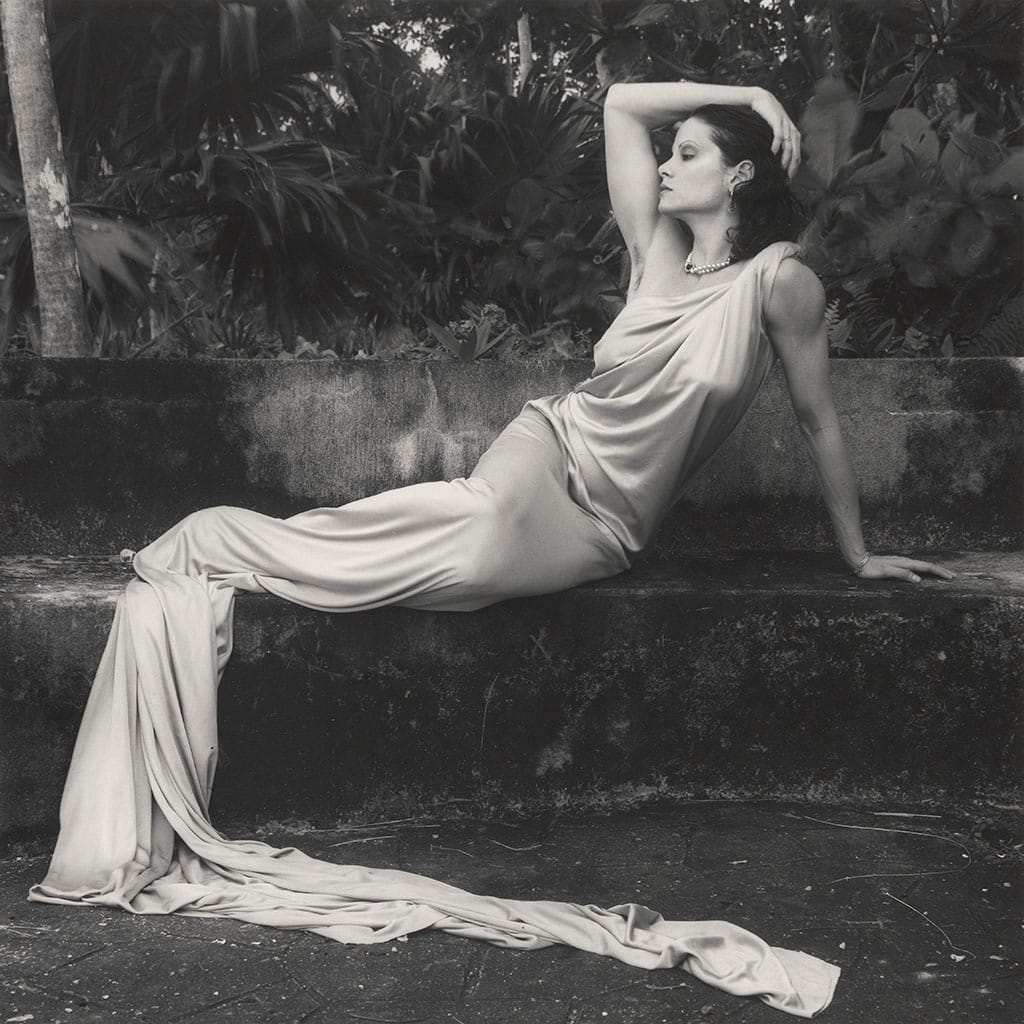
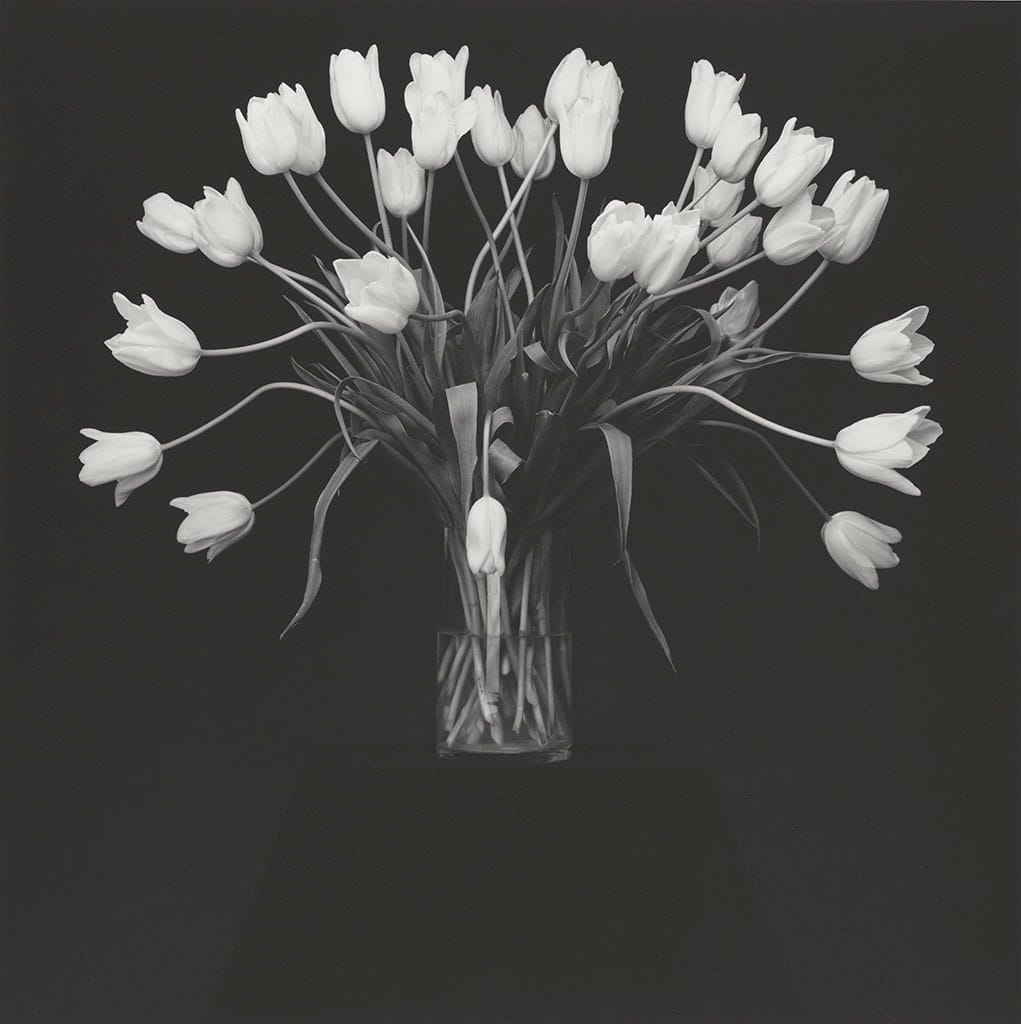
(Left to Right, Top): Brian Ridley and Lyle Heeter (1979), Phillip Prioleau (1982), Self-Portrait (1988). (Bottom): Lisa Lyon (1982), Tulips (1988), all by Robert Mapplethorpe © Robert Mapplethorpe Foundation
Mapplethorpe’s first solo gallery exhibition was a series of Polaroids in 1973 and shortly after this he was exhibiting his polaroids alongside established artists like Andy Warhol. In 1975, Patti Smith released her debut album Horses. The cover of the album featured a portrait of Smith taken by Mapplethorpe - launching them both into stardom. By 1978, he had his first solo museum exhibition and published two portfolios: X and Y. The X portfolio included 13 explicitly sexual, BDSM images and the Y portfolio contained floral still lifes. Unsurprisingly, the X portfolio was very controversial. Moving into the 1980s, Mapplethorpe became obsessed with body-builder Lisa Lyon and the idea of “body-as-sculpture”. The two worked together for several years and published a book of portraits in 1983 “Lady: Lisa Lyon”. His portraits from this period were often compared to Renaissance sculptures because his human subjects were very muscular and posed in a similar fashion. Mapplethorpe appreciated this comparison, believing that if “he been born in the Renaissance he would have undoubtedly chose Carrara marble as his medium. But he was pleased with the path he had taken. For a prolific artist who revered sculpture, photography was the modern solution and the medium he chose to elevate the most complex aspects of sexuality as art.” (Patti Smith)
Although he was queer, he didn’t seek to complicate notions around what makes a body beautiful. His decision to photograph very muscular, athletic people reinforced classical standards of beauty. The intersection of his work with his cultural/political frame reveals that while he took beautiful photos, he had some disappointing ideas around bodies in particular around race.

His most thorny work was his 1986 “Black Book” which contained erotic portraits of Black men. Many of these portraits included fragmented bodies, where only a torso, arm, or thighs were visible. About this, Mapplethorpe said, “I zero in on the body part that I consider the most perfect part in that particular model.” But of course divorcing a body part from a person is de-humanizing. This in combination with the sexualization of Black men by a white man cannot be divorced from the racist, violent histories which both hyper-sexualize and dehumanize Black men in the United States. The Black Book has been subject to criticism from many, including poet Essex Hemphill, who stated that Mapplethorpe’s work displayed a lack of care for gay Black men “except as sexual subjects.” The artist Glenn Ligon created “Notes on the Margin of the Black Book” (1991-1993) in order to make sense of his own responses to the images and “various fears and fantasies projected onto these black male nudes.” (Guggenheim)
Although Mapplethorpe’s early photography of S&M scenes and homoeroticism were shocking for the time, his overall style was formalist. He sought perfection in form, and his interest in classical, sculptural beauty was described by the Tate Gallery as, “his relentless pursuit of beauty with no imperfections.” His portrait subjects were wide-ranging from royalty and socialites to his close friends and lovers but all were done in his style. Much like classical Greek sculpture, his portraits follow the ruled of symmetry and geometry to reach towards a particular ideal. So his art stands at an interesting crossroads. In technique and form his art was not edgy, it aspired to be like the conventional “greats” but the content of some of his art was so edgy, that it could not be printed in magazines or shown in galleries. He once said, “I’m not attempting to make a social statement,” which is perhaps reflected in his formal commitment to a kind of classical beauty. But by virtue of the subjects he was presenting, he was.
Mapplethorpe was diagnosed with AIDS in 1986 following a hospital visit for pneumonia. Within the year, he lost his partner, Sam Wagstaff, to an AIDS related illness. Following his diagnosis and the loss of his lover, he threw himself even more into photography and planned one final exhibition, “Robert Mapplethorpe: The Perfect Moment”.
Mapplethorpe died on March 9, 1989 at the age of 42. Although he died just eight months after the opening of his final show, his art remained the center of a national debate around artistic freedom and censorship. His show was slated for a posthumous nationwide tour but The Corcoran Gallery in Washington DC cancelled “Robert Mapplethorpe: The Perfect Moment” because it included photographs from his explicit X portfolio. Since the show had received funding from the National Endowment of the Arts, conservative and religious organizations seized the opportunity. They called into question what kinds of art government money should be allocated for and claimed that Mapplethorpe's art was “anti-christian bigotry”.
Despite these setbacks, the show went up at the Washington Project for the Arts and drew the attention of record-breaking crowds. The controversy around this show continued in 1990, when the Contemporary Arts Center in Cincinnati and their museum director were charged with obscenity for exhibiting Mapplethorpe’s work. They were found not guilty, but the controversy brought up huge questions around tax dollar support for the arts, who gets to decide what is obscene, and whether or not art is free speech.
Mapplethrope’s legacy as an artist was not only about the beauty of his photographs and their work to legitimate photography as fine art, but the limits of censorship, and questions around what makes something art vs pornography.
Astrology
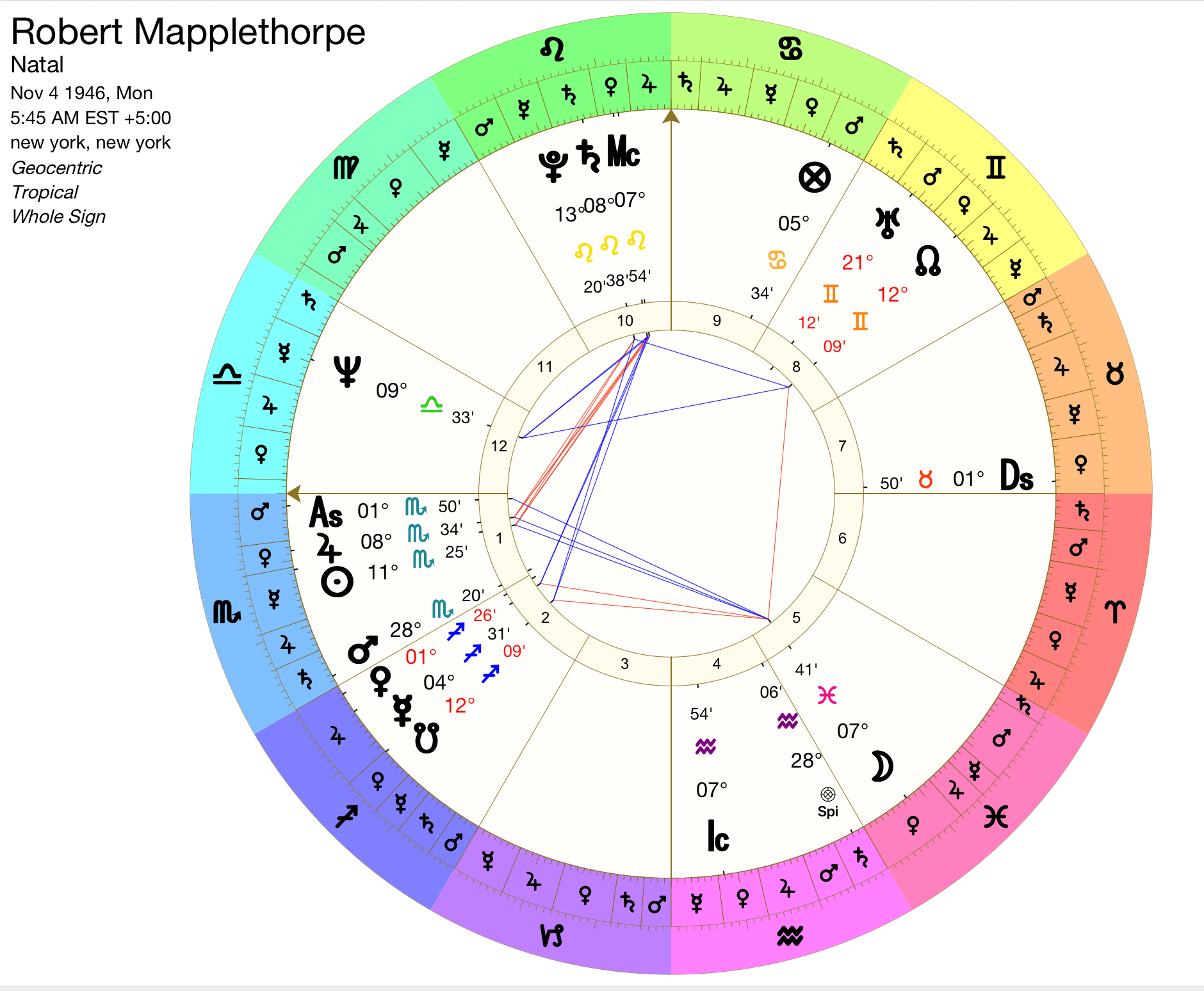
Mapplethorpe was born on November 4, 1946 at 5:45 AM in New York, NY.
He was born as Scorpio was rising with Jupiter, the Sun, and Mars all in Scorpio in the first house.
Scorpio Rising
Scorpio as a sign is a fixed water sign, ruled by Mars. It is the sign of the detriment of Venus and the fall of the Moon. Interestingly, no planet exalts in Scorpio specifically because it is the place of the Moon’s fall. With Scorpio we have the rigidity of the fixed signs, the internal emotional landscape of the water signs, but with the driving, piercing force of Mars. With Scorpios there can be a combination of defensive, protective qualities and a desire to go deep, to investigate, to use Mars’ tools of cutting and severing to get to the bottom of something. Because of the fixidity of the sign there can be a level of single-mindedness, or deep focus on a particular thing. While Mars’ other sign Aries, is known more for its impulsivity and ability to get something started, Scorpio is the more contemplative or perhaps strategic side of Mars. There is both the ability and desire to have a plan of attack. Because Scorpio is a water sign, there can be this ability to look at hard truths or sit with challenging emotions, to be able to look at something in the face even when it is uncomfortable.
Mapplethorpe had several planets in Scorpio - his Sun, Jupiter, and Mars, as well as his ascendant. Mars, the ruler of Scorpio, is in it’s own sign meaning he’s really embodying Scorpio. His ascendant is also in the bounds/decan of Mars so we’re getting a very Martial embodiment. Although the Sun is in the same sign as the ascendant, his ascendant is at 1° Scorpio and his Sun is at 11° Scorpio, making this a night chart. Because Mars is in sect, this tempers the impacts of Mars significantly, so while Mars is still malefic, we’d expect to see some of the more positive elements of Mars in Scorpio - the ability to cut and sever where needed, deep focus and precision, as opposed to some of the more challenging elements like conflict or inflammation. That said, we do see several instances of Mapplethorpe getting in hot water because of his art which I think we can definitely assign to Mars (and Saturn - we'll get into it!).
With the ascendant ruler in his first house, there’s a level of agency and ability to direct the life. He knew what he wanted, and he went for it. He “possessed an unwavering belief in his own chosen vocation.” (Patti Smith) Because his ascendant is ruled by a malefic in its own rulership, this didn’t come without hardship, but he “was internally ready to surmount all obstacles…He was destined to be an Artist, a calling infused with strife and revelation.” (Patti Smith) The malefic nature of Mars brings in the obstacles, but because Mars is dignified and in sect, these are surmountable difficulties.
Mars also rules Mapplethorpe's 6th house. The 6th house is the place of illness, of health, its where we do a lot of problem solving around have a body and where we toil and sacrifice. Unlike the 1st house, the 6th is a place where there is not a lot of agency. This combination played out in Mapplethorpe's willingness to sacrifice the needs of his body for his art. Patti Smith said once, "the cost of our workspace required sacrifice; our lack of money was daunting. But hunger didn’t bother Robert as much as not being able to acquire the things he needed to execute a vision. Often the needs of the work trumped the stomach” so we can see the connection between this 6th house place of toil and sacrifice with the 1st house body, that he was sacrificing the needs of his body (food) for his work. Here we see how Mars is still a malefic though. Even though he had artistic success throughout his life, he suffered and sacrificed for it.
Because so much of Mapplethorpe’s chart is tied up in Scorpio, we see these themes all throughout his life and work.
Planets in Scorpio
The other planets in Scorpio are his Sun, and Jupiter.
The Sun rules the 10th house in his chart which speaks to his career, his reputation, and his public standing. With the ruler of the 10th house in the 1st, we'd expect a clear tie in between his career and who he was. We definitely see this, even just in the number of self-portraits that he took throughout the years. He was the subject of the art that he was known for.

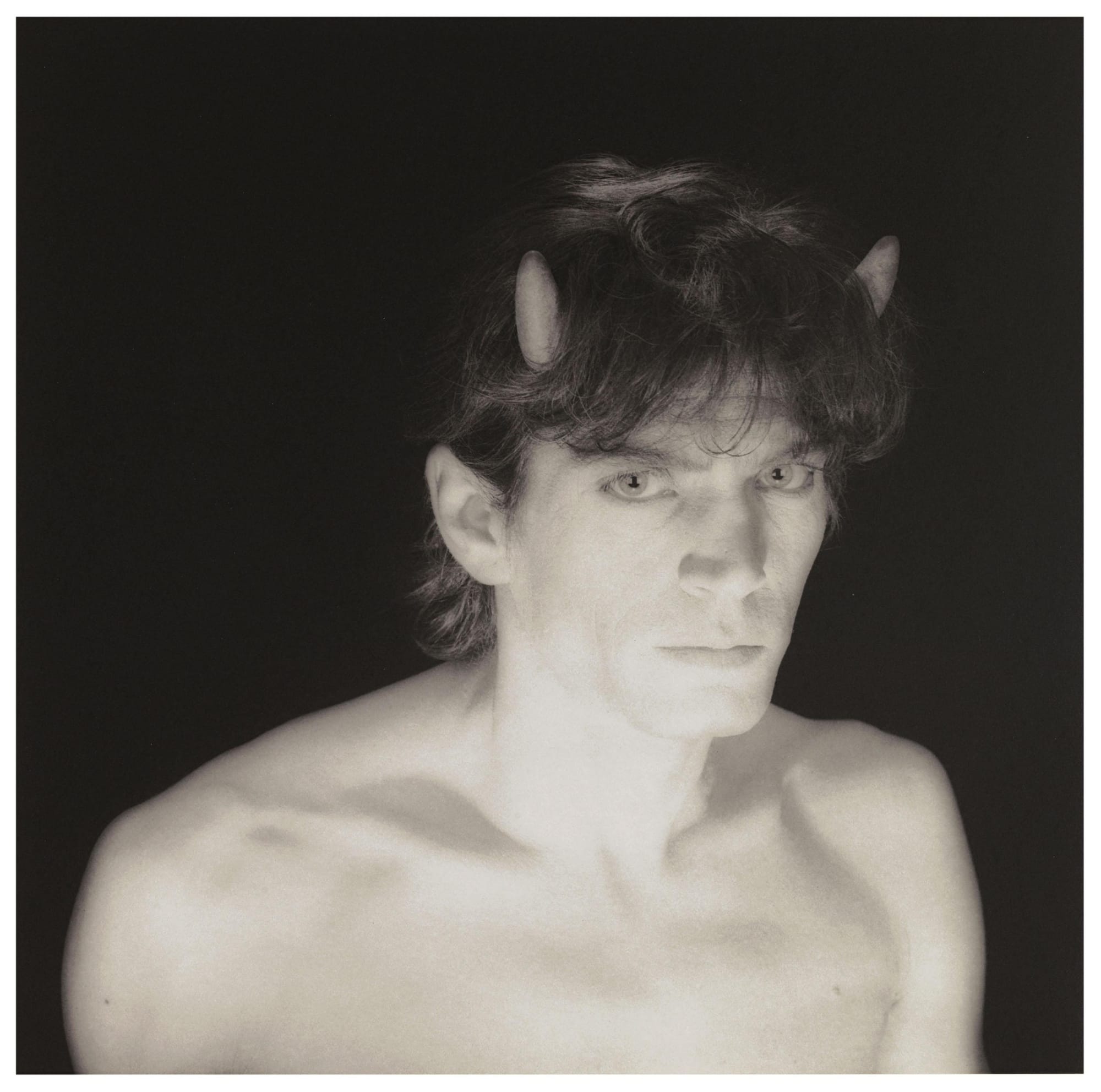
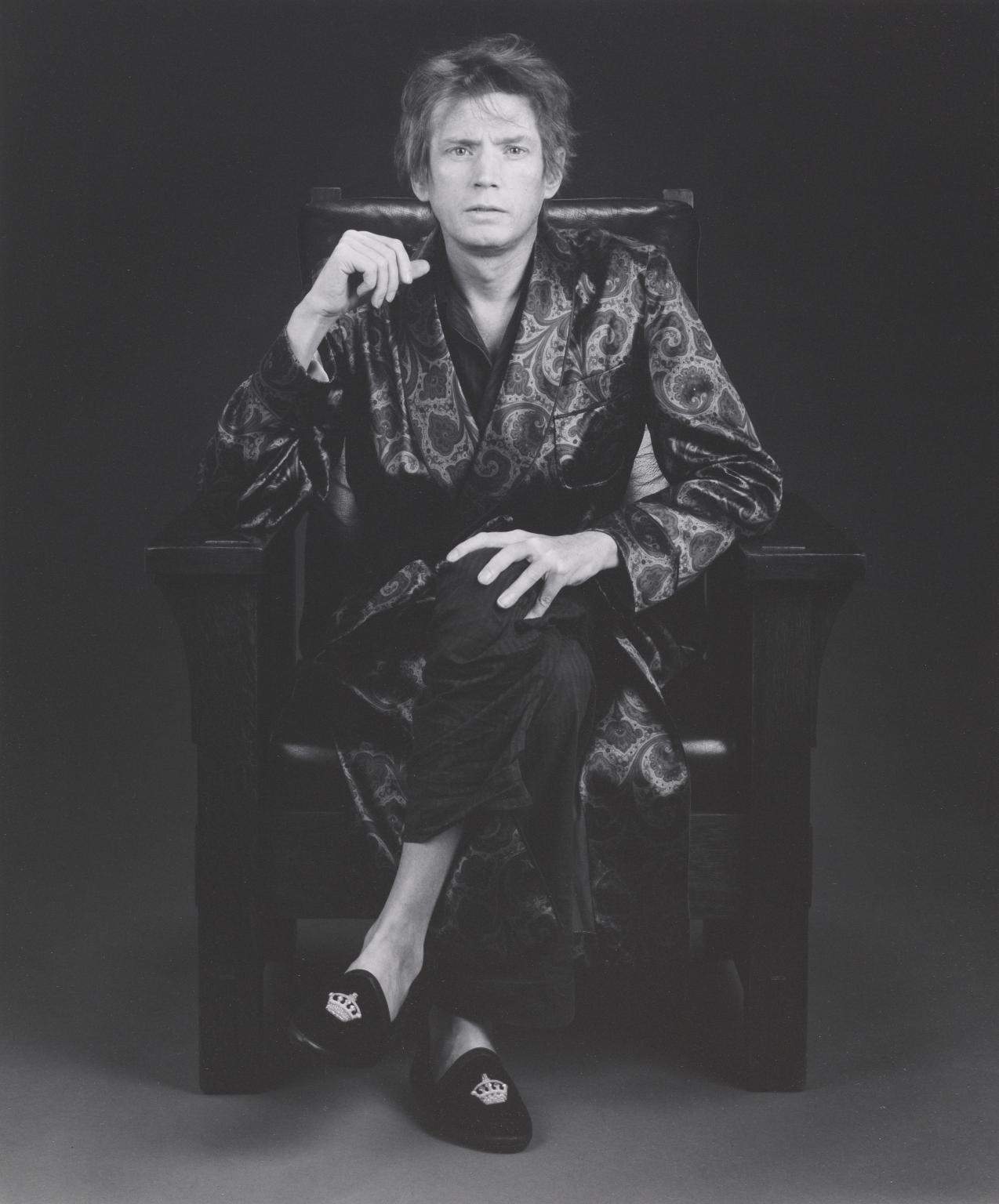
Self Portraits of Mapplethorpe (1980, 1985, 1988) © Robert Mapplethorpe Foundation.
He does have Saturn in detriment closely conjunct the Midheaven. Saturn, as the malefic contrary to sect, shows us the controversy and strife around his public image. Saturn is in a fairly imposing position. It is conjunct the Midheaven and in an overcoming square to the Sun, Jupiter, and Mars (though Sun and Jupiter are much closer by degree, with Jupiter in an exact square). Who he was, and his career and public image were deeply linked, but Saturn having the upper hand meant that he wasn’t always seen favorably. Saturn on the MC is the other signature for getting publicly into hot water.
Jupiter rules over the 5th house which contains his Moon and the 2nd house which contains his Venus and Mercury. Jupiter is the closest planet to the Ascendant and rules over his Sect Light and the Benefic of Sect, softening what might otherwise be a quite challenging set up. The Moon in the 5th house makes a closely applying trine to Jupiter. This well placed Moon in the 5th, is what signals his love of art. And with Jupiter locked into a tight square with Saturn on the Midheaven, it is not shocking that this art became his life-long career.
With Jupiter Mrs and the Sun all together, Vettius Valens tells us that this is “indicative of men involved in disturbances and dangers, but enthusiastic and effective in their business enterprises. These men have a share of glory: they are leaders, governors, supervisors of public matters, but are prone to fall because the hatred of the great follows them, along with threats, betrayals, plots from their families, and criminal charges.” I think we might read “involvement in disturbances and dangers” as Mapplethorpe’s participation in BDSM spaces because they would have been publicly understood as taboo or dangerous at that time. He was effective in his business enterprises - getting solo shows, taking portraits of royalty, and he did have his share of glory and public fame. The fall because of the hatred of the great also makes sense in the context of censorship around his art and although he was’t criminally charged, people involved in sharing his art were.
Scorpio Style Art
Mapplethorpe’s artistic style deeply embodied Mars and Scorpio. Mars in Scorpio has laser sharp, singular focus and an ability to execute a plan. After his early foray into collage (literally cutting up photographs), once he got access to a camera, “He was instantaneously consumed and embarked wholeheartedly.” (Patti Smith)
Photography became his main focus and unlike other artists, he didn’t waver in terms of medium or style. He had a deep focus on one method of art, and even more impressive, he had his style which changed very little throughout his life. Almost all of his photography was black and white portraiture, mostly in a studio. As he honed his craft, we might think of this as akin to sharpening a knife, he got better and better, and more clear on his focus, but he was always moving the same direction, seeking perfection of form. His relentless pursuit of beauty - even if perhaps we might want to challenge his ideas around beauty, is a perfect example of Mars in Scorpio, Scorpio’s fixidity means it does not give up, so we get the relentlessness, and Mars of course pursues.
Much of his photography is working at striping away the excess. That Mars action of striping away he used to remove color by filming in black and white, context by mostly shooting in his studio, people from their individual body parts by honing in on the part of the model he believed to be the most beautiful, and attempted to separate art from social context or commentary. Mars in domicile is very capable of whittling away at the larger picture and honing in on specific elements.
Concluding Thoughts
Mapplethorpe is a really interesting case of a planet in domicile. Although he was queer and a beautiful, sometimes provocative photographer, his style and his taste were fairly conventional. Planets in domicile are often able to act in accordance with expectation. In form, his photographs are in accordance with the expectation of what a photograph is supposed to look like. He elevated photography, bringing it into the realm of high art, but he was not an experimental photographer. He didn’t question standards of beauty, photographing very traditional, skinny, muscular, young bodies as the ideals of beauty. He was simply trying to capture their beauty - not question it, twist it, reimagine it. I don’t mean this as a dig at his art but just that we have seen a number of examples of people with planets in detriment or fall having to be really creative with how they express themselves and here we actually have a really good example of the opposite.
If you'd like to learn more about Mapplethorpe's astrology and support the research necessary to make Star Gays possible, please consider becoming a patron. Your support makes it possible to continue doing deep dives on the astrology of queer artists, activists, and thinkers.
Sources
